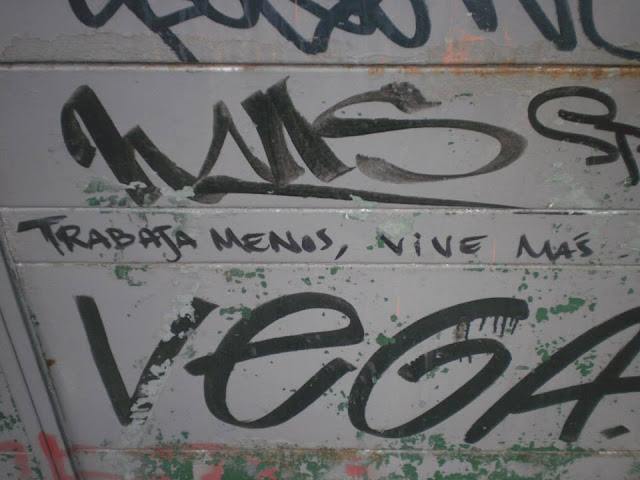2012. Just 4 years after the economic crisis that crossed the Atlantic Ocean and hit Portugal like a tsunami. We could feel its effect in the streets : poverty was in the air, tramps on the ground and people hustlin' to survive. And those anticapitalist messages on the walls. That was the present at this time, but Lisboa is a city where past, present and future are flatmates with deep social relations.
The past, first. Represented by those old decaying houses made of broken windows and walls falling on the floor piece by piece. They are truly beautiful, not yet eaten by gentrification (basically when rich people come to live in a poor neighbourhood chasing its inhabitants away by making the rent much more expensive). Nothing sadder than a street that lost its soul. Where art, culture and life left for modern aseptic buildings. I mean those "too perfect" and boring urban area that can be very easily duplicated in every country. The pictures below don't belong to that category. They are showing half-destroyed houses full of (hi)story(ies) that left scars of wisdom on them. They are the open book of what happened to those streets and its people. They are genuine work of art. The time beeing the artist. The first one gave a tree a frame, like a painting. Almost like the wall itself is honouring the cypress. On the third and fourth one, the time painted beautiful structure on the wall. I must admit I have a great passion for old ordinary walls. I can't help taking picture when I see some interesting one.
Then, those thousands of small streets that bridge the gap between the past and the present. They are one the many reasons I love cities like Napoli, Lisboa, Firenze or Cusco. I can spent hours walking through them aimeless until my feets reminds me I've been walking way too much. They are openair daily theatres where life plays its comedy and tragedy. Or simply its routine. They are full of surprises and unexpected events or encounters. They create human warmth and identity.
The present then. Never really there, Always gone. Pictures used to make what reality can't : freeze the time. Capture the reality as it is at a certain moment of time. The city as seen from a tower through a fence. Or an absurd surrealistic message on human condition.
And finally the future, or best said : the past vision of the future as it could be. The modern "Parque das Naçoes" has been built in a former industrial area for 1998 Lisbon World Exposition. This ain't ugly at all, but it's an explicit exemple of soulless asceptic neighbourhood. The picture below, perfectly illustrate the beauty and the emptyness of this modern place. A place built for itself, not really for human being.


























